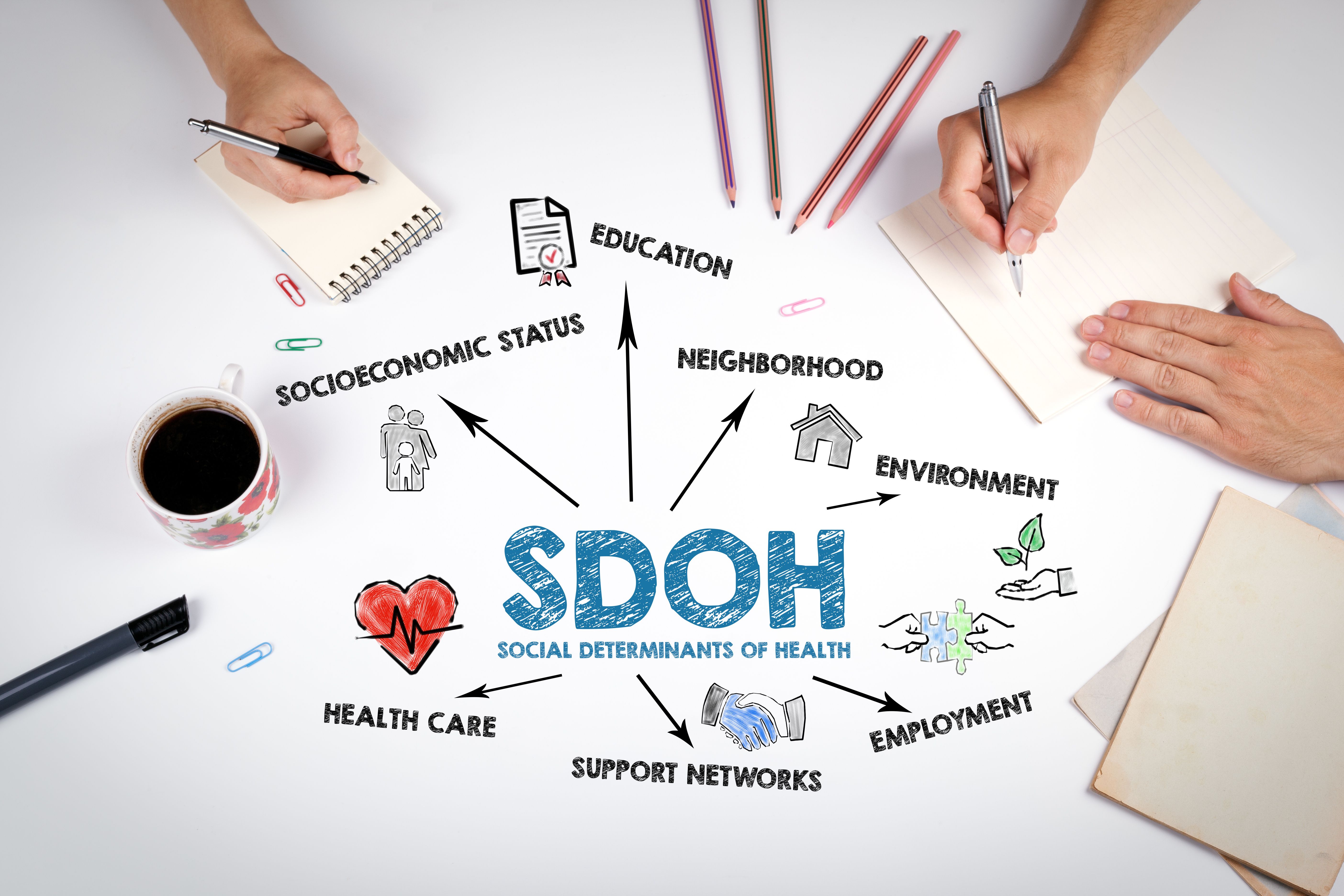- Center on Health Equity & Access
- Clinical
- Health Care Cost
- Health Care Delivery
- Insurance
- Policy
- Technology
- Value-Based Care
Addressing SDOH in Pediatric Dermatology to Improve Outcomes
At the Society for Pediatric Dermatology Annual Meeting, Sarah Coates, MD, FAAD, highlights how social drivers shape pediatric skin health and how clinicians can respond.
Social determinants of health (SDOH) play a critical role in pediatric dermatologic outcomes, according to Sarah Coates, MD, FAAD, assistant clinical professor of dermatology at the University of California San Francisco, and director at Zuckerberg San Francisco General Pediatric Dermatology.1
During a session at the Society for Pediatric Dermatology (SPD) 50th Annual Meeting, Coates emphasized how financial hardship, low health literacy, and limited access to care can worsen conditions like eczema. Solutions included the use of patient navigators, teledermatology, and a new formal SDOH curriculum designed to equip dermatology residents to address health disparities more effectively.

Social Drivers and Adverse Childhood Experiences
Coates underscored the influence of SDOH on pediatric dermatologic outcomes, which encompass the environments in which individuals are born, grow, work, and live, including access to health care and education, economic stability, and community context.
Prior research underscores these disparities, which show that Black children living in highly segregated communities had significantly higher odds of severe atopic dermatitis (OR, 6.67; 95% CI, 1.46-30.42), and patients with severe psoriasis were more likely to have only a high school education or less (OR, 1.47; 95% CI, 1.18-1.82).2 Additionally, poor melanoma outcomes were linked to being Black or Hispanic, having a rural residence, and having Medicaid insurance, while patients with hidradenitis suppurativa were more likely to be Medicaid recipients than those without the condition (OR, 1.13; 95% CI, 1.09-1.16).
Such factors, Coates argued, often outweigh what can be learned from a one-on-one patient encounter, yet standard social history questions rarely capture them. Recognizing these broader influences not only helps clinicians address health disparities but also builds stronger patient relationships, boosts adherence to treatment, and may reduce provider burnout.
The discussion also spotlighted adverse childhood experiences (ACEs), which include traumatic events such as abuse, neglect, or parental mental health issues. ACEs are linked to long-term conditions, including skin diseases, obesity, and depression, explained Coates.
“You might be surprised that 61% of US adults have had at least 1 ACE, 17% have experienced 4 or more, and for this reason, the American Academy of Pediatrics says it's our duty to identify and address these,” said Coates.
The Importance of Health Literacy
Coates also stressed that health literacy is a key driver of patient outcomes. Alarmingly, only about 12% of adults in the US have proficient health literacy, making it one of the most significant predictors of treatment adherence, emergency department use, poor health outcomes, and even early mortality. To close this gap, clinicians should simplify their language, avoid medical jargon, and adopt practical tools such as diagrams, plain-language handouts, and visual aids, explained Coates. These materials should be offered in appropriate reading levels and languages, including Spanish, and patients should be encouraged to take photos of important visuals to reference later. Making information clear and accessible, especially for those facing language or literacy barriers, is essential for equitable care and effective patient education.
Strategies for Addressing Barriers to Care
To address barriers to care in pediatric dermatology, Coates highlighted the importance of tailoring treatment plans to patients’ real-life circumstances. Cost is a major concern, with many families unable to afford basic over-the-counter treatments like emollients—often not covered by Medicaid, explained Coates. Clinicians were encouraged to ask about discount memberships, such as Sam’s Club or Costco, that might help families access affordable care. Adjusting treatment recommendations to match patients’ living situations was also emphasized.
“A lot of the things that we would instinctively recommend based on the situation might need to be adjusted,” said Coates.
A “3 As” approach—awareness, assistance, and adjustment—was also proposed to help clinicians screen for social risks, connect families to resources, and adapt care accordingly. Additionally, Coates suggested telemedicine as a tool to reduce geographic and transportation barriers, and billing for time spent addressing social determinants was encouraged to reflect the complexity of care. Finally, the use of patient navigators was recommended to help manage follow-up and continuity of care for high-need patients.
Improving Medical Training
To strengthen medical training in health equity, Coates described the creation of a formal curriculum on SDOH for dermatology residents. This curriculum includes lectures, journal clubs, and the introduction of a health equity chief resident role, all designed to help trainees better recognize social drivers and incorporate them into patient care plans. A key component of the program is the integration of a patient navigator to support continuity of care for medically and socially complex patients. Coates also underscored the importance of mentoring and sponsoring students and residents who are passionate about health equity, reinforcing the need to build a future workforce equipped to reduce disparities and deliver more equitable care.
“Some other changes that we've made in our program include creating a model called the health equity chief resident, which is a group of residents who are dedicated to this curriculum and also for building engagement with our community,” said Coates. “Give them a title so that they can feel empowered to really invest in this work.”
References
1. Coates, S. Identifying and addressing social and structural drivers of health. Presented at: Society for Pediatric Dermatology Annual Meeting; July 23-26, 2025; Seattle, WA.
2. Williams J, Amerson EH, Chang AY. How dermatologists can address the structural and social determinants of health—from awareness to action. JAMA Dermatol. 2022;158(4):351-352. doi:10.1001/jamadermatol.2021.5925
